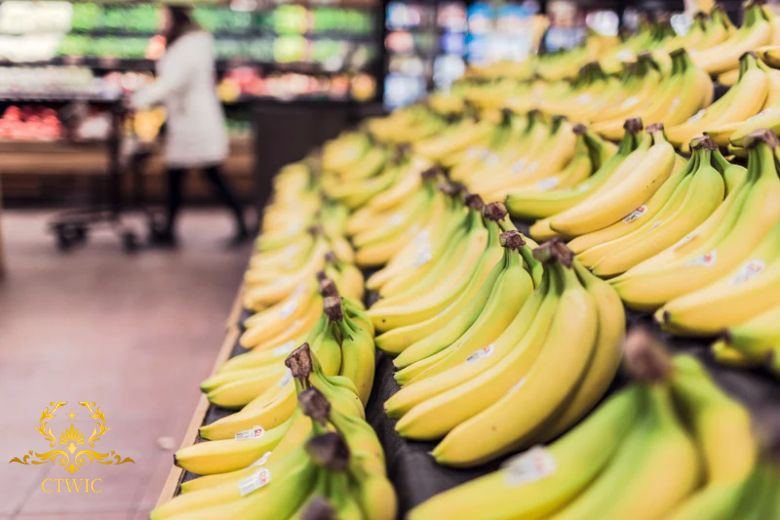The Health Benefits of Bananas: A Nutritional Powerhouse
Bananas are not only delicious and convenient, but they also offer a plethora of health benefits. Packed with essential nutrients, they are often considered a nutritional powerhouse. In this article, we will explore the various health benefits of bananas and why they deserve a place in your daily diet.
Nutritional Profile of Bananas
Table of Contents
Before diving into the specific health benefits, let’s take a closer look at the nutritional profile of bananas. These fruits are an excellent source of macronutrients such as carbohydrates, proteins, and dietary fiber. They also contain several essential micronutrients, including vitamins and minerals.
Macronutrients in Bananas
A medium-sized banana contains approximately 105 calories and provides a good amount of energy. It primarily consists of carbohydrates, with around 27 grams per serving. These carbohydrates are predominantly in the form of natural sugars, including fructose, glucose, and sucrose. Bananas also contain a small amount of protein, about 1 gram per serving.
Micronutrients in Bananas
In addition to macronutrients, bananas are rich in several important micronutrients. They are an excellent source of vitamin C, providing approximately 17% of the recommended daily intake per serving. Bananas also contain significant amounts of vitamin B6, manganese, and potassium. These micronutrients play essential roles in various bodily functions and contribute to overall health.
Digestive Health Benefits
One of the standout benefits of bananas is their positive impact on digestive health. This is largely due to their high fiber content. A medium-sized banana contains approximately 3 grams of dietary fiber, which helps promote regular bowel movements and prevent constipation. Including bananas in your diet can help maintain a healthy digestive system.
Heart Health Benefits
Bananas are known for their heart-healthy properties, primarily due to their high potassium content. Potassium is a crucial mineral that plays a vital role in maintaining proper heart function and regulating blood pressure. Consuming bananas regularly can help lower blood pressure levels and reduce the risk of cardiovascular diseases.
Energy Boosting Properties
When it comes to a quick energy boost, bananas are a great choice. Thanks to their natural sugar content, including fructose and glucose, bananas provide a rapid source of energy. Whether you need a pre-workout snack or a mid-day pick-me-up, reaching for a banana can provide you with an instant energy boost.
Weight Management
If you’re looking to manage your weight, bananas can be a valuable addition to your diet. Despite their sweet taste, bananas are relatively low in calories. They also have a satisfying factor due to their fiber content, which can help curb hunger and prevent overeating. Enjoying a banana as a healthy snack can keep you feeling full and satisfied without adding excessive calories.
Mood and Mental Health Benefits
Bananas have been associated with mood-enhancing effects, primarily due to their tryptophan content. Tryptophan is an essential amino acid that the body converts into serotonin, a neurotransmitter responsible for regulating mood. Including bananas in your diet can help boost serotonin levels and promote a sense of well-being and happiness.
Exercise Performance and Recovery
For athletes and fitness enthusiasts, bananas can be a valuable ally in improving exercise performance and aiding in post-workout recovery. Bananas are rich in electrolytes, including potassium, which helps prevent muscle cramps and aids in proper muscle function. Consuming a banana before or after a workout can replenish electrolytes and promote faster recovery.
Immune System Support
The high vitamin C content in bananas makes them a great choice for immune system support. Vitamin C is a potent antioxidant that helps protect the body against oxidative stress and boosts the immune system. Including bananas in your diet can contribute to overall immune health and help defend against common illnesses.
Skin and Hair Benefits
Beyond their internal health benefits, bananas can also work wonders for your skin and hair. They contain a good amount of vitamin A, which promotes healthy skin and can improve the overall appearance of your complexion. Additionally, the moisturizing properties of bananas can help hydrate your skin and hair, leaving them soft and supple.
Bone Health
Bananas contribute to bone health due to their calcium and magnesium content. These minerals are essential for maintaining strong and healthy bones. Consuming bananas regularly can help support bone density and reduce the risk of osteoporosis and other bone-related conditions.
Conclusion
Bananas are not just a tasty and convenient snack; they offer a wide range of health benefits. From promoting digestive health and supporting heart function to providing a natural energy boost and enhancing mood, bananas truly deserve their reputation as a nutritional powerhouse. Including bananas in your daily diet can contribute to overall well-being and help you maintain a healthy lifestyle.
FAQs
1. Can bananas help with weight loss? Yes, bananas can aid in weight loss due to their fiber content and ability to promote feelings of fullness. However, they should be consumed as part of a balanced diet.
2. Are bananas a good source of potassium? Absolutely! Bananas are an excellent source of potassium, an essential mineral that plays a crucial role in heart health and blood pressure regulation.
3. Can eating bananas improve digestion? Yes, bananas are rich in dietary fiber, which promotes regular bowel movements and helps maintain a healthy digestive system.
4. Do bananas have any benefits for skin and hair? Yes, bananas contain vitamin A, which promotes healthy skin, and their moisturizing properties can benefit both the skin and hair.
5. Are there any side effects of eating too many bananas? While bananas are generally safe to consume, eating an excessive amount may lead to an increased intake of sugars and calories. Moderation is key.
Fred Meyer Near Me: Discover the Convenience and Quality


